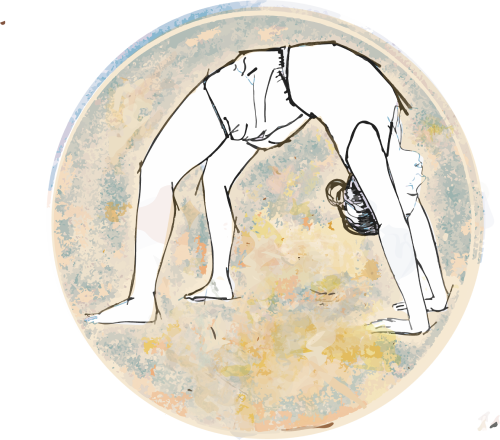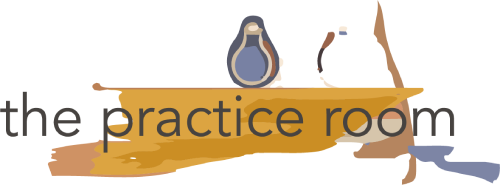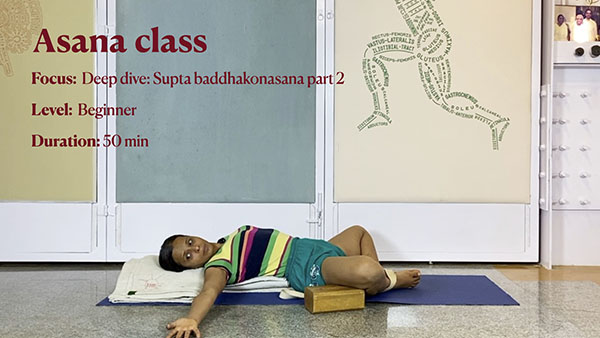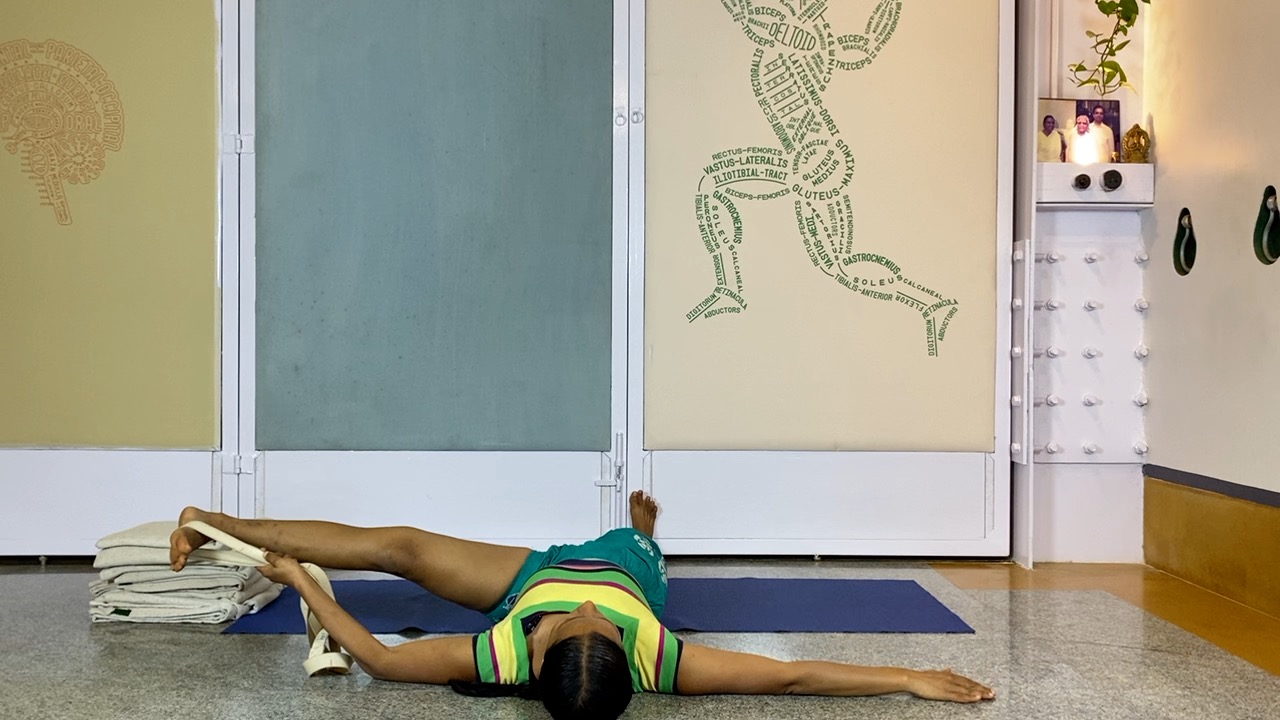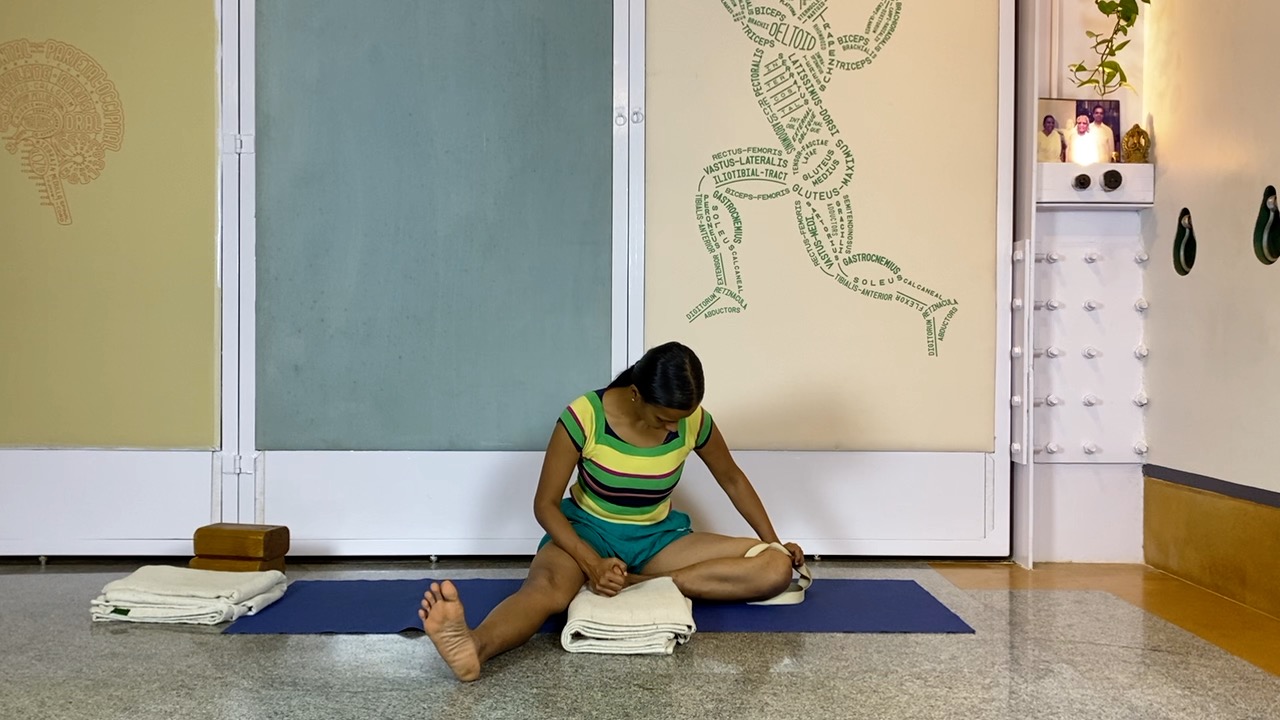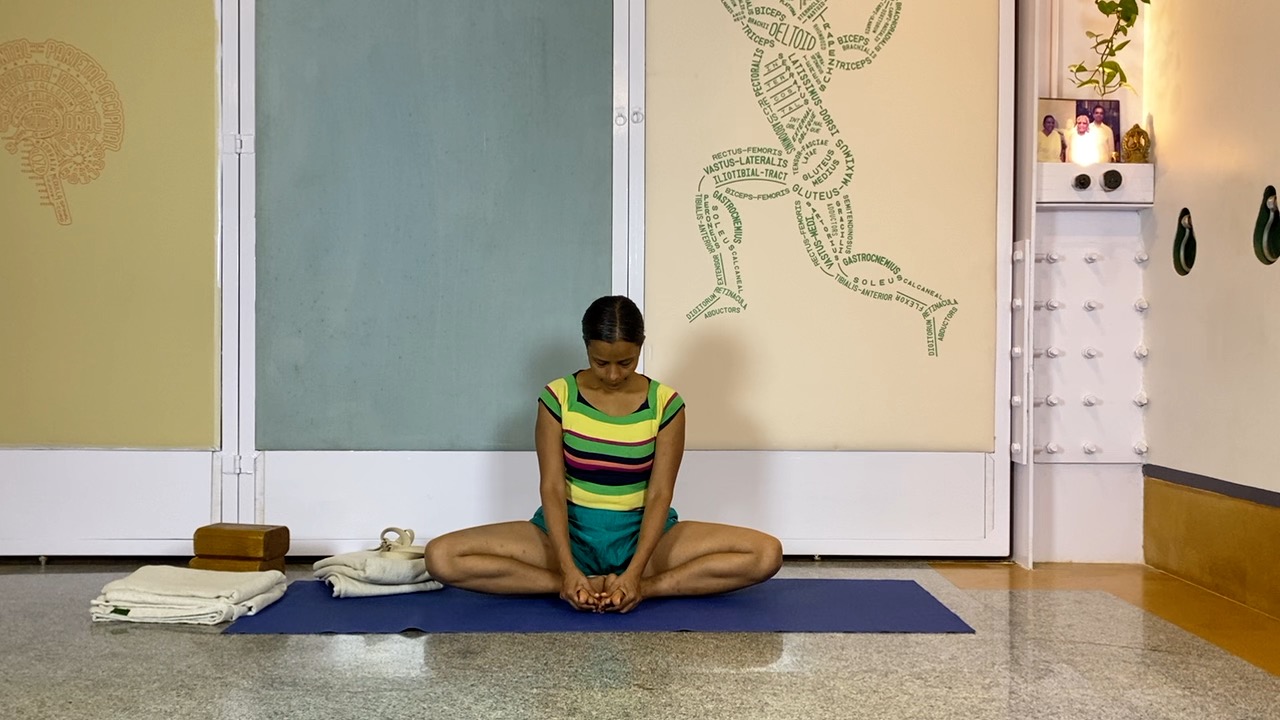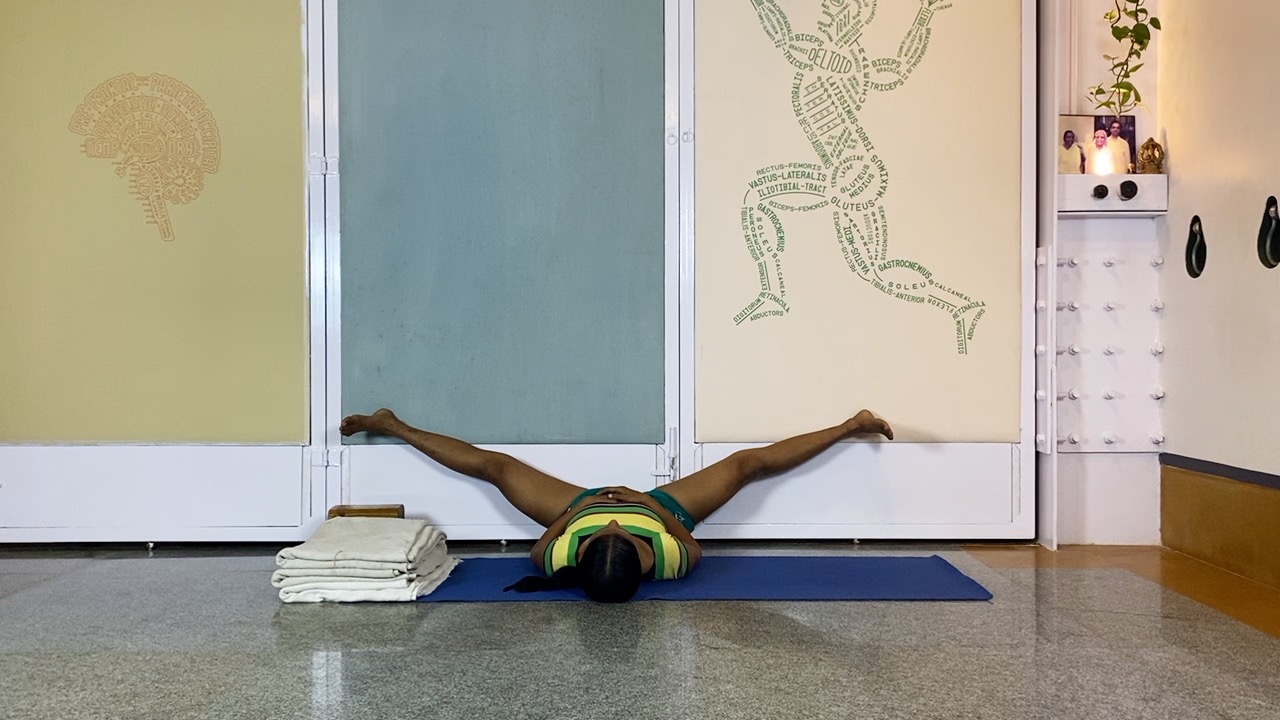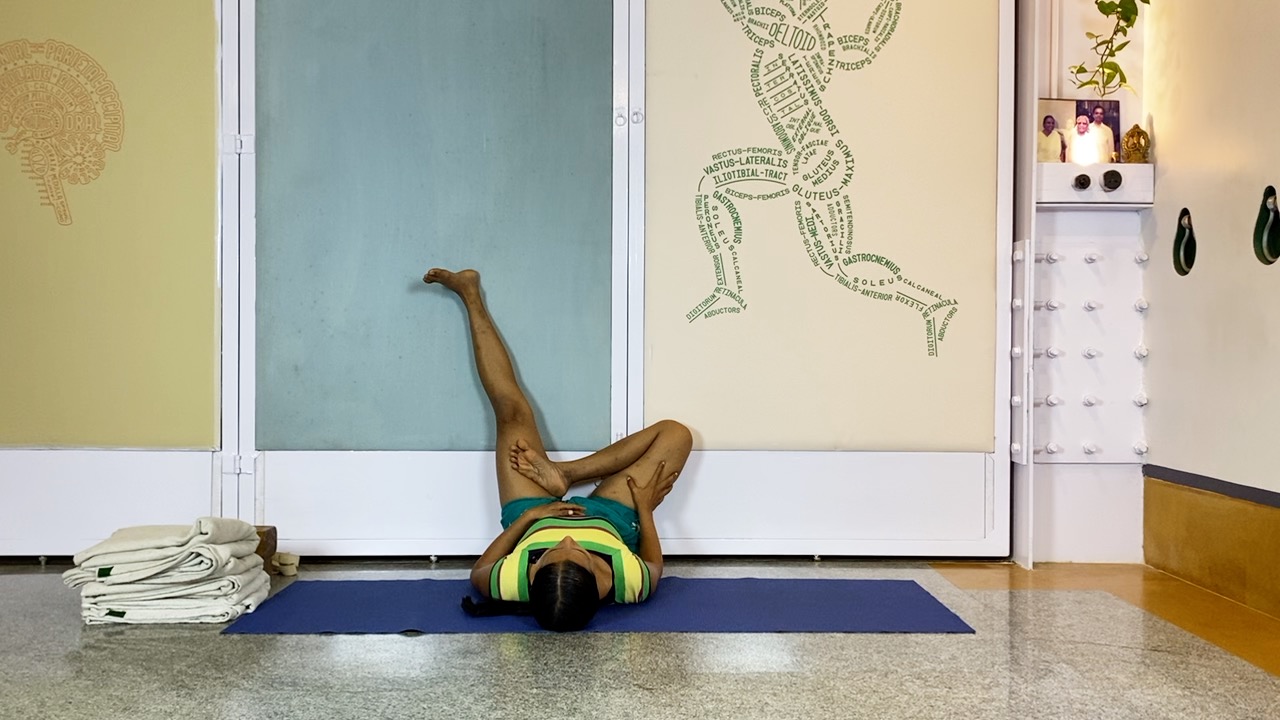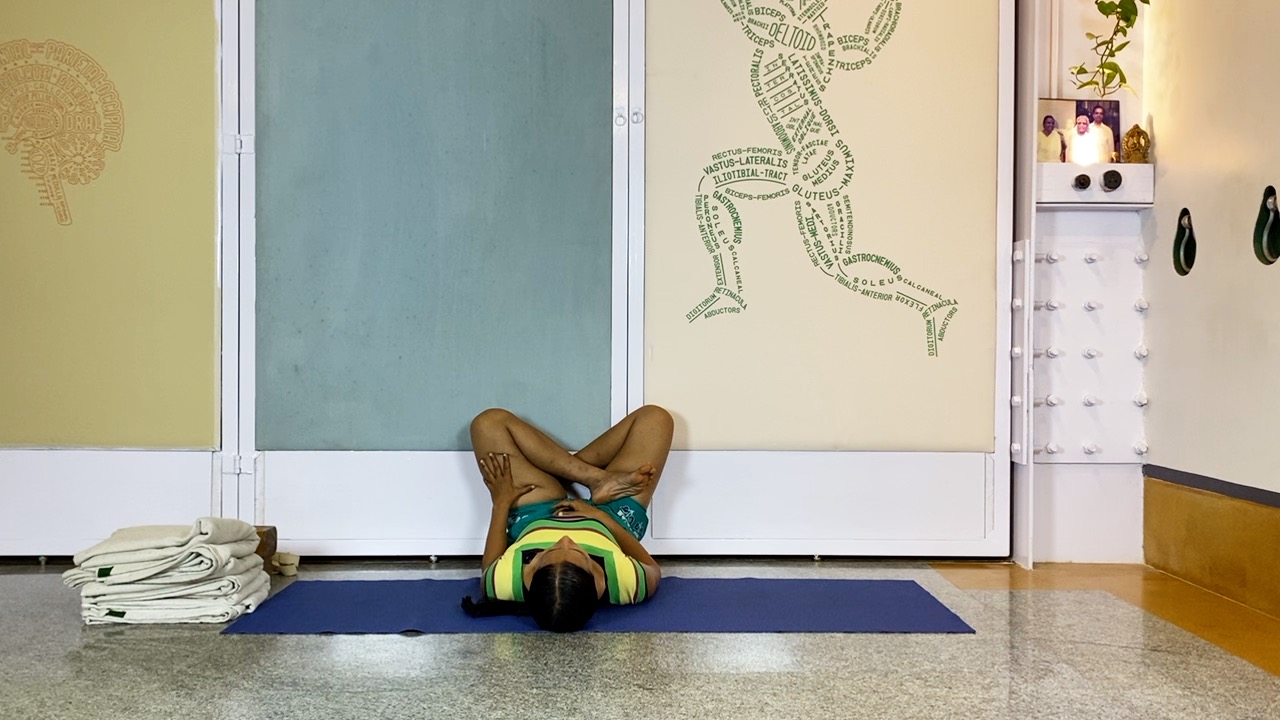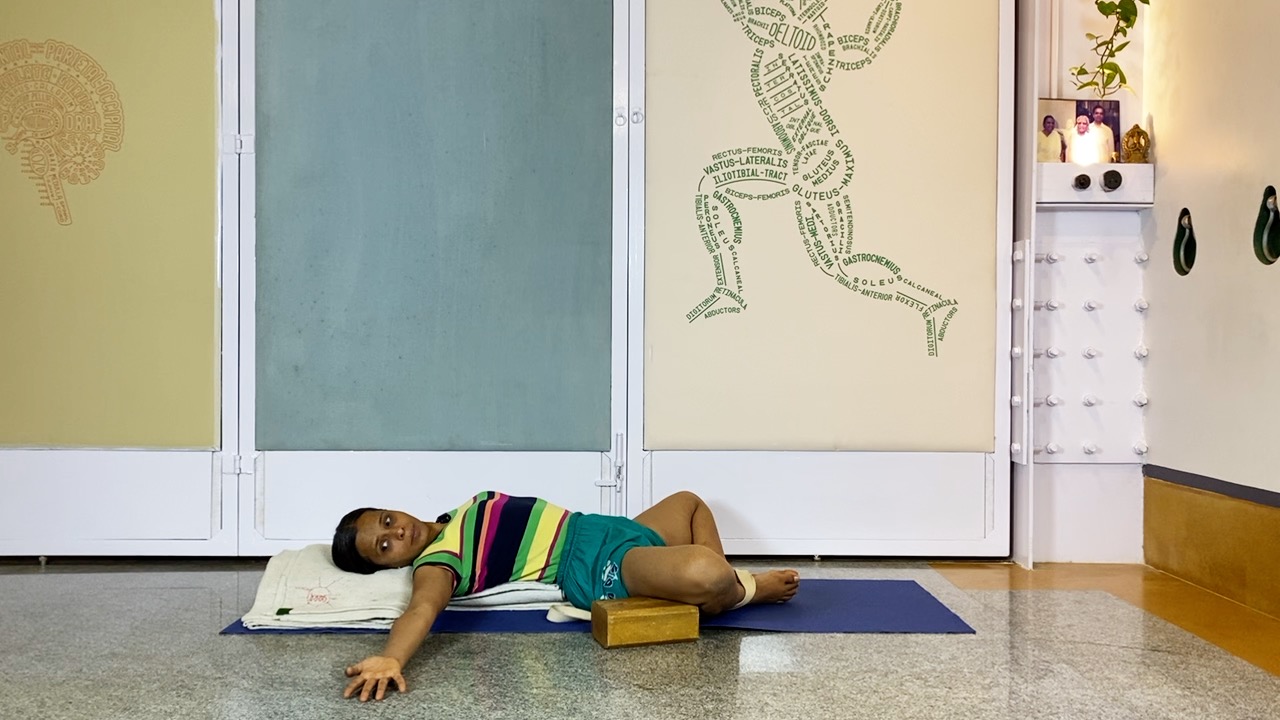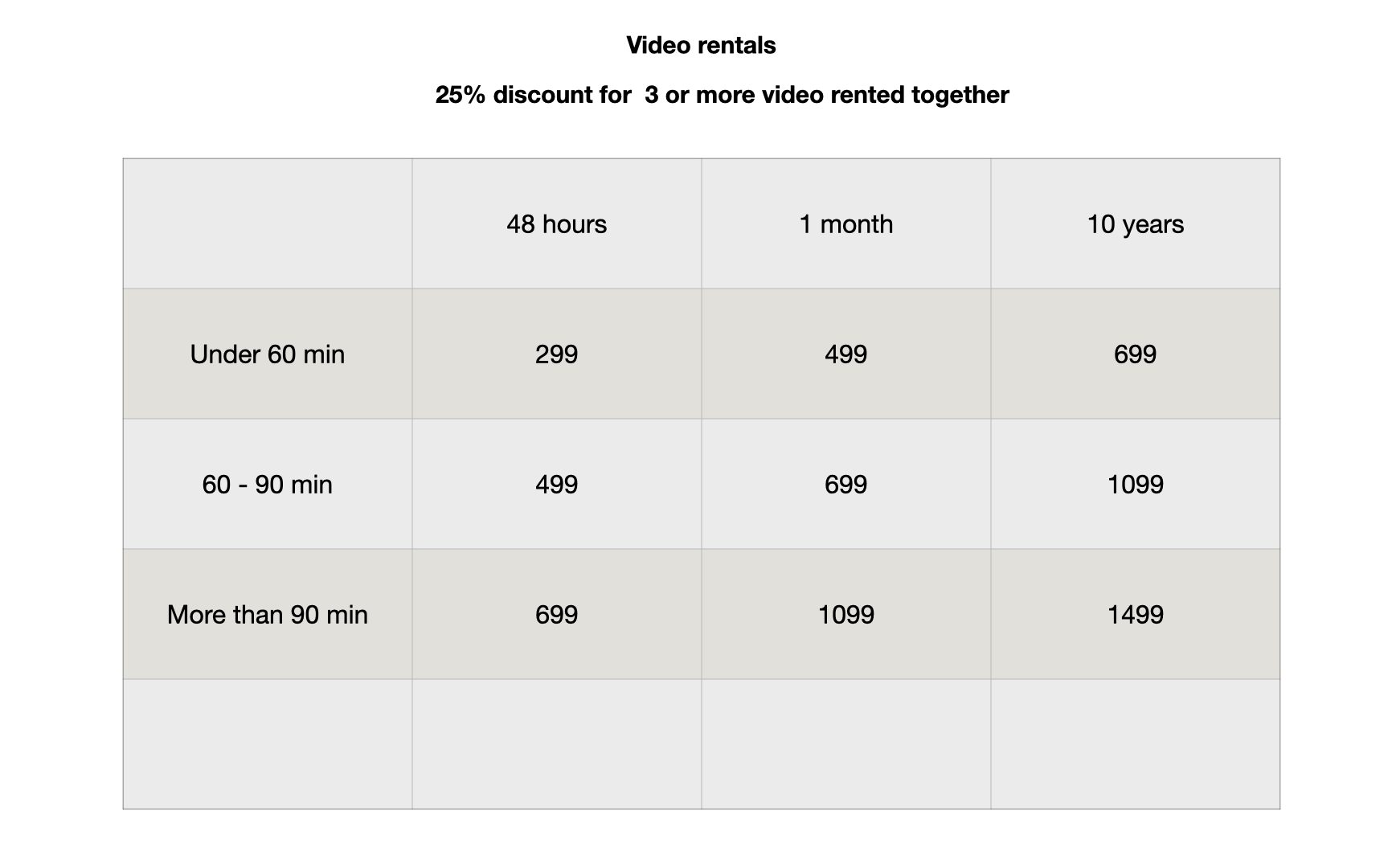The baddhakona (literally meaning closed angle; where the thighs are rolled out, knees are flexed, and the soles of the feet touch each other evenly) legs are usually applied in two ways in asana – in a seated position, and in a supine position. Both baddhakonasana and supta baddhakonasana have great therapeutic potential since they create ‘space’ in the lower abdominal pelvic area. Think of all the organs that exist there, and the functions that they control (digestive, reproductive, urinary, hormonal centres) and the roles of these two asanas becomes obvious. In the Iyengar tradition both these positions are used in a variety of ways, especially supta baddhakonasana is used used extensively for therapeutic, as well as for restful conditions. This is one of the essential positions that women should know for reproductive health. Breath studies (progressing to pranayama) are often introduced in supta baddhakonasana. There are many different ways to use supports/ props for supta baddhakonasana to accentuate its beneficial effects, or to adapt for knee/ back discomforts etc. But for a beginner level who does not have any health complications, it is important to first understand this position (in fact all asana positions) with minimal props.
This session is a continuation of the previous session. It starts with preparation, and then introduces supta baddhakonasana with some simple props

